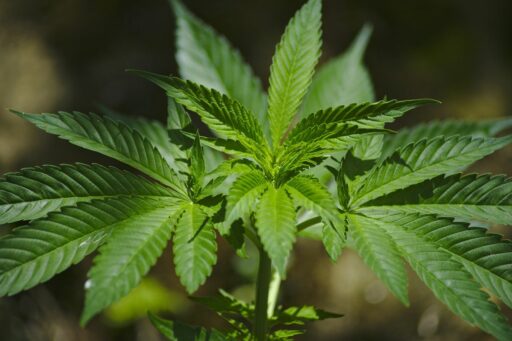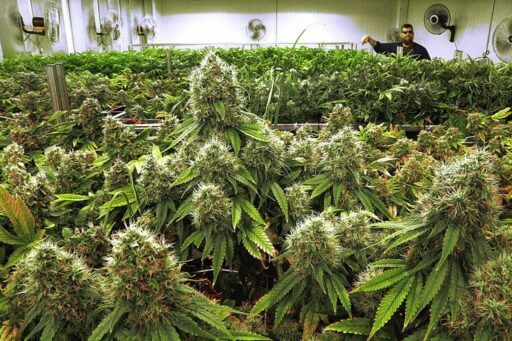The debate over the legalization of marijuana is fraught with misconceptions and misinformation. While some argue for its benefits and safety, others point to the potential dangers and complexities that come with legalizing a psychoactive substance. This article aims to address the common misconceptions surrounding marijuana, focusing on the issues of safety, the psychoactive component THC, the implications for youth, and the legal and regulatory challenges. Drawing on expert insights, we will explore the nuances of the case against legalization and the importance of basing decisions on scientific evidence and public health considerations.
Key Takeaways
- Cultural acceptance and legality contribute to the misconception that marijuana is safe, particularly among youth, increasing their likelihood of use.
- The ‘all-natural’ argument is misleading as THC, the psychoactive component of marijuana, poses real risks of addiction and overdose, contrary to popular belief.
- Early consumption of THC can have detrimental effects on brain development, challenging the perception of safety for young people and the role of quality control in mitigating risks.
- The legal landscape of marijuana is complex, with state and federal laws often at odds, creating confusion and unintended consequences with legalization efforts.
- Historical propaganda has skewed public perception of marijuana, underscoring the need for accurate information and science-based arguments in the legalization debate.
The Misconception of Safety and Legality

The Influence of Cultural Acceptance on Youth
The cultural portrayal of marijuana in media has a significant impact on youth, often depicting the substance in a positive light. The normalization of marijuana through pop culture and media has led to a diminished perception of risk among young people. This shift in perception is reflected in the attitudes and behaviors of youth, who may view marijuana as a harmless part of their lifestyle.
- It’s legal
- It’s all-natural
- No one overdoses
- It’s not addictive
- It’s better for you than alcohol
These common beliefs, as outlined by Shunkwiler, contribute to the growing acceptance of marijuana among youth. However, the reality is that the developing brains of young people are particularly vulnerable to the effects of THC, the psychoactive component of marijuana.
The evolving disparities in cannabis use among youth by demographics suggest that cultural and legal shifts may also influence the prevalence of other substance use.
The Monitoring the Future study indicates a significant decline in the perceived risk of regular marijuana use from nearly 80% in the late 1980s and early 1990s to much lower levels today. This change in perception is alarming, as it coincides with an increase in marijuana experimentation and dependency among youth.
Legal Status and Perceived Safety
The legalization of marijuana often leads to a shift in public perception, particularly regarding its safety. Legal status can inadvertently signal to the public that a substance is safe, despite the lack of substantial evidence to support such a claim. This perception is especially concerning when considering the unregulated market and the potential for unsafe products.
- Regulated cannabis products are generally safer due to stringent quality control measures.
- Unlicensed businesses may sell cannabis that has not undergone proper safety checks, posing health risks.
- Legalization supports social and economic equity goals, but it must be balanced with public health concerns.
The assumption that legal equals safe is a dangerous simplification. It ignores the complexities of marijuana’s effects and the importance of regulation and education in ensuring public safety.
While some argue that legalization can lead to better control and safer products, it is crucial to scrutinize the regulatory framework in place. Without robust quality control and education, the perceived safety of legalized marijuana could lead to increased exposure to harmful substances and a misunderstanding of the risks involved.
Comparing Marijuana to Alcohol and Other Substances
When discussing the legalization of marijuana, it’s crucial to consider how it compares to other substances, particularly alcohol. Both substances carry significant risks, and neither can be deemed entirely safe. The debate often centers on the relative dangers and health benefits of each, but it’s important to recognize that both can have serious consequences on health and safety.
- Alcohol is associated with a wide range of health risks, including liver disease, cardiovascular problems, and addiction. It is also a factor in numerous accidents and injuries, particularly when it comes to driving under the influence.
- Marijuana, while often touted for its medicinal properties, also presents risks such as impaired cognitive function, potential for addiction, and impacts on mental health.
The comparison between marijuana and alcohol is not a matter of which is safer, but rather understanding the unique risks each substance presents.
The table below succinctly presents data on the impact of both substances:
| Substance | Health Risks | Addiction Potential | Impact on Driving |
|---|---|---|---|
| Alcohol | High | High | Severe |
| Marijuana | Moderate | Moderate | Moderate |
Understanding THC: The Psychoactive Component

Debunking the ‘All-Natural’ Argument
The assertion that marijuana is harmless because it is ‘all-natural’ is a pervasive myth that requires scrutiny. The term ‘all-natural’ is not a synonym for ‘safe’ or ‘non-addictive’. Many natural substances are toxic or harmful, and marijuana, specifically THC, is no exception. The presence of THC, a psychoactive compound, raises concerns about the drug’s safety, particularly with long-term use.
The idea that ‘all-natural’ equates to safety is a misconception that overlooks the complexity of how substances interact with the human body.
Understanding the nature of THC is crucial in dispelling the ‘all-natural’ fallacy. Here are some key points to consider:
- THC is the primary psychoactive component in marijuana.
- It can lead to addiction and has been linked to various mental health issues.
- The potency of THC in marijuana has increased significantly over the years.
The conversation around marijuana often includes comparisons to other substances, such as alcohol, to justify its safety. However, this comparison is flawed and does not take into account the unique properties and effects of THC.
The Historical Propaganda and Its Long-Term Effects
The historical propaganda surrounding marijuana has left a lasting imprint on society’s perception of the drug. The stigma attached to cannabis use has deep roots in racial prejudice and the fear of mental illness, a narrative that has been perpetuated over time. Prohibition itself was born out of these negative stigmas and stereotypes, which continue to influence public opinion and policy.
- The association of marijuana with criminality and moral decline.
- The portrayal of cannabis users in media as dangerous or deviant.
- The use of marijuana as a political tool to marginalize certain groups.
The long-term effects of this propaganda are evident in the ongoing debates and the resistance to change, despite the growing body of scientific evidence challenging the myths.
The conversation around marijuana is complex, and it is crucial to recognize how historical biases have shaped current attitudes. Only by acknowledging and addressing these long-standing misconceptions can society move forward in a more informed and equitable manner.
The Reality of Addiction and Overdose Risks
While the conversation around marijuana often focuses on its potential benefits, it is crucial to address the reality of addiction and overdose risks. Despite popular belief, marijuana is not free from the dangers of addiction. Substance addiction, when carried into the workplace, can lead to a multitude of issues, including theft, conflicts with coworkers, and liability concerns.
The prospect of an overdose fatality, though statistically rare, cannot be dismissed outright. The Centers for Disease Control’s National Institute for Occupational Safety and Health reported 388 fatal work injury deaths in 2020 due to unintentional overdose on non-medical drugs.
Understanding the risks associated with THC, the psychoactive component of marijuana, is essential for an informed debate on legalization. The potential for addiction and the consequences that follow must be acknowledged as part of the broader discussion on marijuana policy.
Implications for Youth: The Vulnerable Developing Brain

The Impact of THC on Brain Development
The developing brain is particularly vulnerable to the effects of substances, and THC is no exception. The psychoactive component of marijuana, THC, has been shown to have several adverse effects on the cognitive functions of young individuals, which can persist into adulthood.
- Difficulty with thinking and problem-solving: THC affects the prefrontal cortex, the decision-making center of the brain, leading to challenges in problem-solving.
- Memory and learning impairments: Regular use of marijuana in youth can result in issues with both short-term and long-term memory, affecting educational outcomes.
- Reduced coordination: The cerebellum, crucial for coordination, is also affected by THC, with potential long-term developmental consequences.
The brain continues to develop until around the age of 25, and the introduction of THC during this critical period can lead to lasting physical and physiological changes. While the full extent of these effects is still being studied, the evidence points to a need for caution in exposing young brains to marijuana.
The impact on school performance is particularly concerning. Studies have shown that marijuana use can decrease attention, memory, and learning skills, with effects that may last for days or weeks after use. The more frequently marijuana is used, the more pronounced these effects can be, suggesting a dose-dependent relationship between THC exposure and cognitive decline.
Educating Young People on the Risks
It is crucial to educate young people on the risks associated with marijuana use, particularly as it pertains to their developing brains. The effects of marijuana on the teenage and young adult brain can be profound, with studies indicating potential cognitive problems, such as issues with attention, concentration, problem-solving, learning, and memory. Additionally, there is evidence of reduced coordination and reaction time, which can have significant implications for performance in both academic and everyday settings.
The most productive employees feel safe at work. This sentiment is equally applicable to young individuals who must feel secure in their environments to thrive. Ensuring that they are well-informed about the dangers of marijuana is a part of creating that safe space for growth and development.
To effectively communicate these risks, a multi-faceted approach is necessary. This includes:
- Providing accurate and science-based information about the effects of THC.
- Creating programs that resonate with youth, utilizing relatable language and media.
- Engaging in open dialogues that encourage questions and honest discussions.
- Collaborating with schools, families, and communities to reinforce the message.
By taking these steps, we can hope to instill a sense of responsibility and awareness in young people regarding marijuana use and its potential impact on their futures.
The Role of Quality Control in Perception of Safety
The perception of safety surrounding marijuana is significantly influenced by the quality control measures in place. Quality control is pivotal in ensuring that marijuana products meet certain safety standards, which can affect public perception and trust. Without rigorous testing and standardization, consumers cannot be certain of the product’s purity or potency, leading to potential health risks.
- Rigorous testing for contaminants and potency
- Standardization of dosing and packaging
- Transparency in product sourcing and production processes
The implementation of strict quality control protocols is essential to mitigate the risks associated with marijuana use and to maintain a level of safety that the public can trust.
Quality control also plays a role in the broader discussion of marijuana legalization. It is a critical component that can either bolster or undermine the argument for legalizing marijuana. By ensuring that products are consistently safe and reliable, quality control measures can help to alleviate concerns over the potential harms of marijuana use.
The Legal and Regulatory Quagmire

State vs. Federal Law: The Conflicting Messages
The dichotomy between state and federal law creates a perplexing landscape for individuals and businesses alike. Federal law classifies marijuana as an illegal substance, yet many states have moved to legalize it for medical or recreational use. This conflicting message complicates enforcement, regulation, and understanding of the law.
- Federal law operates under the Controlled Substances Act, placing marijuana in Schedule I.
- State laws vary, with some legalizing marijuana for various uses.
- Businesses and individuals must navigate these discrepancies, often facing legal uncertainties.
The tension between state and federal stances on marijuana not only confuses the public but also hinders the establishment of a coherent national policy on drug use and regulation. The lack of uniformity can lead to a regulatory quagmire, where the same actions are both legal and illegal, depending on the jurisdiction.
The Supremacy Clause dictates that federal law overrides state law in cases of direct conflict. However, the federal government has often taken a hands-off approach, allowing states to experiment with marijuana policies. This has resulted in a patchwork of regulations that vary significantly across the country.
The Debate Over Rescheduling Marijuana
The discussion around rescheduling marijuana from Schedule I to Schedule III has sparked considerable debate. Proponents of rescheduling suggest that it could lead to improved regulation and consumer safety by mitigating risks associated with the illicit market. However, critics argue that this move may not resolve the tension between state and federal laws, potentially leaving consumers in a state of confusion regarding the legality and safety of marijuana use.
- Schedule I: No accepted medical use, high abuse potential
- Schedule III: Accepted medical use, moderate to low abuse potential
The implications of rescheduling are multifaceted, affecting everything from taxation to the potential for investment and market growth. Yet, it is essential to recognize that rescheduling alone does not equate to federal legalization, and significant legal and regulatory challenges remain.
While rescheduling may appear as a step towards normalization, it is crucial to scrutinize the underlying motives and potential outcomes of such a policy shift.
The Unintended Consequences of Legalization
The movement to legalize marijuana has been gaining momentum, with several states adopting policies that permit its use for medical or recreational purposes. However, this shift has brought about a series of unintended consequences that are often overlooked in the public discourse. The normalization of marijuana has led to an increase in its use and a rise in abuse/dependence among adults over 21.
- Legalization has created complex challenges for employers, who now face dilemmas regarding drug testing and workplace safety.
- Tax revenue and economic benefits are frequently cited as advantages of legalization, yet they come with trade-offs, such as bolstering the illegal market when communities opt out of legal sales.
- Quality control in licensed dispensaries is assumed to be superior, but this perception may overshadow the potential risks associated with increased accessibility.
The legalization of marijuana doesn’t make the drug less dangerous; it shifts the responsibility of risk assessment from the state to the individual and the workplace.
The debate continues as to whether the benefits of legalization outweigh these consequences. It is crucial to consider the broader societal impact, including the potential for increased workers’ compensation claims, lawsuits, and a decline in workplace productivity.
Conclusion
In conclusion, the journey towards understanding marijuana and its implications for legalization is fraught with misconceptions and propaganda from the past. As we have explored, the perception of marijuana as a safe, non-addictive substance that is ‘better than alcohol’ is particularly prevalent among young people, yet this belief overlooks the potential risks, especially to developing brains. The complexity of marijuana legalization encompasses not only the psychoactive effects of THC but also the societal and economic impacts. While some argue for the benefits of legalization, such as tax revenue and regulated quality, others highlight the dangers of early THC consumption and the challenges of navigating between state and federal laws. It is crucial that any discourse on legalization is grounded in scientific facts and a comprehensive understanding of marijuana’s effects, ensuring that decisions are made with the health and well-being of individuals and communities at the forefront.
Frequently Asked Questions
How have shifting attitudes around marijuana led to increased legalization efforts?
Shifting attitudes around marijuana, influenced by cultural acceptance and the perception of safety, have led to increased legalization efforts. The idea that marijuana is safe because it’s legal, natural, and perceived as non-addictive or less harmful than alcohol has fueled the push for legalization, particularly among young people.
What is THC in marijuana, and why is it considered a psychoactive drug?
THC, or tetrahydrocannabinol, is the main psychoactive component in marijuana that produces the ‘high’ associated with its use. It affects brain function, leading to altered perceptions, mood changes, impaired coordination, and other cognitive functions, making it a psychoactive substance.
Is the portrayal of marijuana in historical propaganda accurate?
No, historical propaganda such as the film ‘Reefer Madness’ presented exaggerated and factually incorrect views of marijuana use. This type of propaganda contributed to negative stereotypes without relying on scientific evidence, leading to misconceptions about the drug’s risks and effects.
Are there risks associated with marijuana use for young people?
Yes, there are significant risks associated with marijuana use for young people. THC can have harmful effects on the developing brain, potentially leading to cognitive impairment, reduced academic performance, and increased susceptibility to mental health issues.
What are the challenges in regulating marijuana at the state and federal levels?
Regulating marijuana poses challenges due to the conflicting messages between state laws, where it may be legal, and federal laws that still categorize it as illegal. Debates over rescheduling marijuana continue, with concerns that it may perpetuate confusion and fail to address the substance’s legal status comprehensively.
How does quality control in licensed dispensaries compare to street-purchased marijuana?
Quality control in licensed dispensaries is typically more stringent, ensuring that products are tested for safety and potency. In contrast, street-purchased marijuana may be unregulated, potentially containing contaminants or inconsistent THC levels, posing additional risks to consumers.





